Indoor flowering plants can transform any space, adding color, fragrance, and life to your home. Whether you’re an experienced indoor gardener or a beginner looking to bring greenery into your apartment, these beautiful blooms are an excellent choice.
Not only do they enhance your interior decor, but many are also surprisingly easy to care for, making them perfect for any plant lover.
Beyond their aesthetic appeal, indoor flowering plants can improve air quality, boost mood, and create a calming atmosphere in your living space. Some varieties even thrive in low-light conditions, allowing you to enjoy vibrant flowers year-round, no matter where you live.
Below, we’ll explore 10 stunning indoor flowering plants perfect for every home, along with essential care tips to help them thrive and bloom beautifully!
1. Peace Lily (Spathiphyllum)

The Peace Lily is a timeless favorite among indoor flowering plants, admired for its elegant white blooms and glossy green foliage. This beautiful plant not only enhances your home’s aesthetics but also acts as a natural air purifier, removing toxins like formaldehyde, benzene, and carbon monoxide.
Care Tips:
- Light: Thrives in low to medium indirect light; too much direct sunlight can scorch the leaves.
- Watering: Keep the soil consistently moist but avoid overwatering, as Peace Lilies are sensitive to root rot.
- Humidity: Prefers higher humidity levels, making it an excellent choice for bathrooms or kitchens.
- Temperature: Grows best in temperatures between 65-80°F (18-27°C).
Why It’s Great:
The Peace Lily is an excellent addition to any indoor space, requiring minimal care while rewarding you with stunning blooms. As one of the best indoor flowering plants, it thrives in various conditions, making it a perfect choice for beginners and experienced plant enthusiasts alike.
2. African Violet (Saintpaulia)

The African Violet is a beloved choice among indoor flowering plants, prized for its vibrant, velvety blooms and compact size. These charming plants can flower year-round when properly cared for, adding a continuous splash of color to your home.
Their delicate petals come in various shades, including deep purple, pink, blue, and white, making them a versatile addition to any indoor garden.
Care Tips:
- Light: Prefers bright, indirect sunlight; too much direct light can scorch the leaves.
- Watering: Water the soil directly using room-temperature water, as wetting the leaves can cause spotting or rot.
- Humidity: Thrives in moderate to high humidity, so placing a tray of water nearby can be beneficial.
- Temperature: Grows best in warm conditions (65-75°F or 18-24°C). Avoid sudden temperature changes.
- Feeding: Use a balanced, water-soluble fertilizer formulated for African Violets every few weeks for continuous blooms.
Why It’s Great:
African Violets are easy to grow indoors and bloom frequently, making them one of the most rewarding indoor flowering plants to care for. Their compact size makes them perfect for small spaces like windowsills, desks, or tabletops, adding a pop of color to any room.
3. Hibiscus (Hibiscus rosa-sinensis)
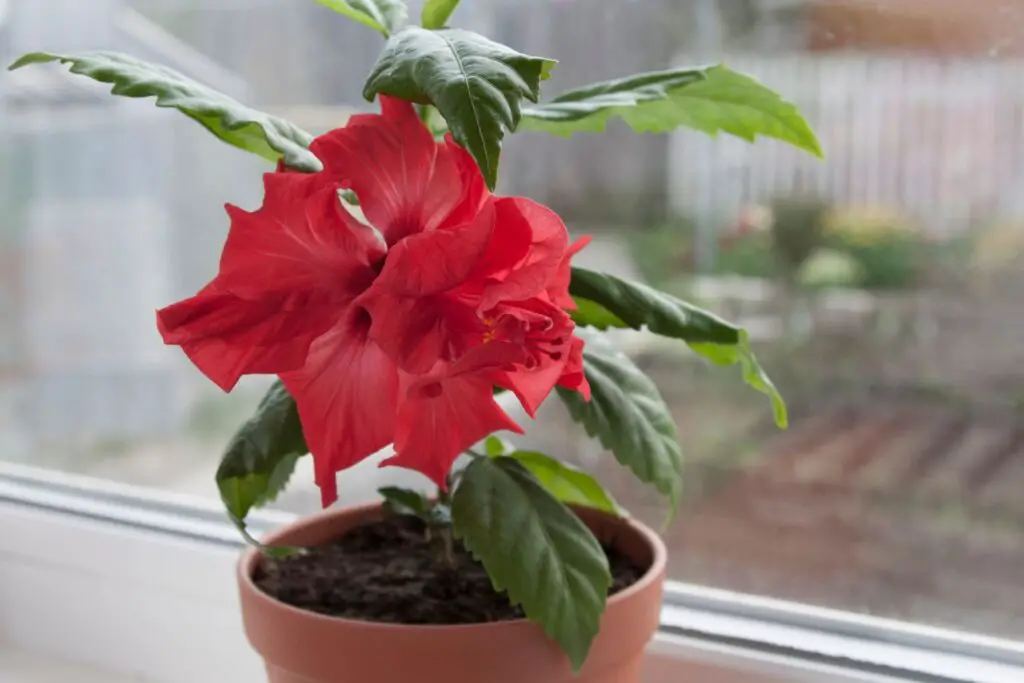
Bring a touch of the tropics indoors with the stunning Hibiscus, known for its large, showy blooms in vibrant shades of red, pink, orange, yellow, and white. This striking plant makes a bold statement in any room, instantly adding an exotic flair to your home.
While traditionally grown outdoors, Hibiscus thrives as an indoor plant when given the right care.
Care Tips:
- Light: Requires bright, direct sunlight for at least 6 hours a day to bloom properly. A sunny windowsill or grow lights can help if natural light is insufficient.
- Watering: Water frequently, keeping the soil consistently moist but not soggy. Ensure good drainage to prevent root rot.
- Humidity: Prefers moderate to high humidity, so occasional misting can be beneficial.
- Temperature: Thrives in warm indoor temperatures (65-85°F or 18-29°C) and should be kept away from cold drafts.
- Feeding: Use a high-potassium fertilizer during the growing season to encourage continuous flowering.
Why It’s Great:
Hibiscus flowers are not only visually stunning but also have practical uses—certain varieties can be used to brew refreshing herbal tea rich in antioxidants. As one of the most eye-catching indoor flowering plants, Hibiscus is perfect for those who love bold, tropical beauty and don’t mind a little extra care to keep it thriving.
Related Topics:
4. Orchid (Phalaenopsis)
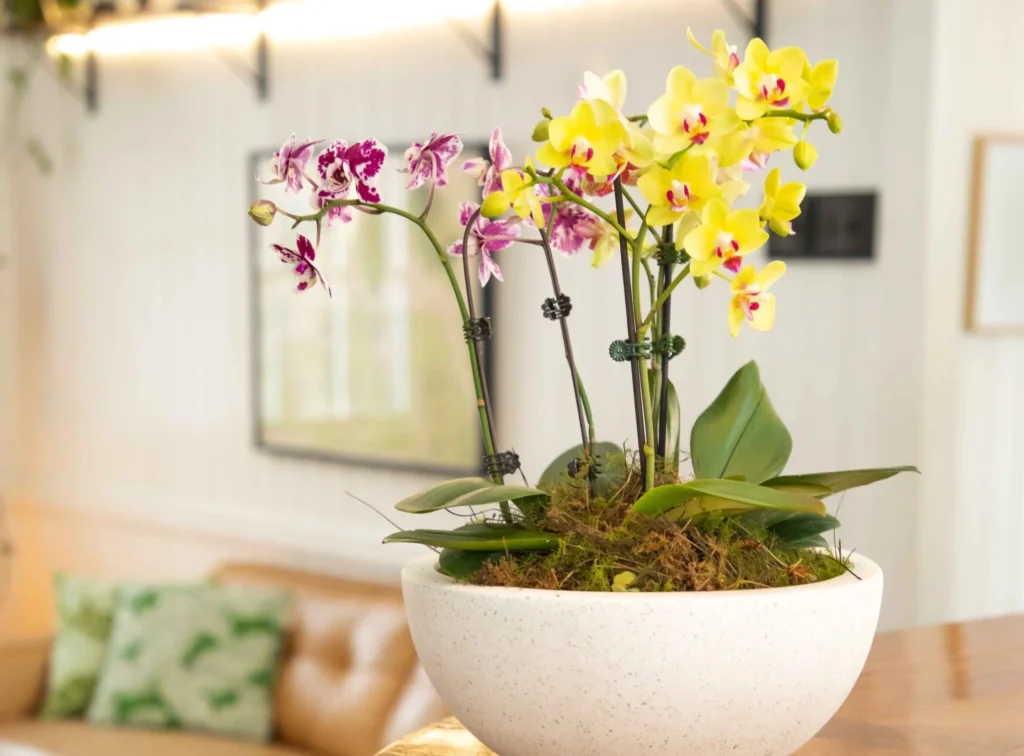
Orchids are synonymous with sophistication and elegance. Known for their exotic appearance and long-lasting blooms, Phalaenopsis orchids, also called moth orchids, bring a touch of luxury to any indoor space. Despite their delicate beauty, these orchids are surprisingly easy to care for and can bloom for months with proper attention.
Care Tips:
- Light: Loves bright, indirect light. Avoid direct sun exposure, which can scorch the leaves. A north- or east-facing window is ideal.
- Watering: Water once a week, allowing the potting medium to dry slightly between waterings. Use room-temperature water and avoid letting water collect in the crown to prevent rot.
- Humidity: Prefers higher humidity levels (50-70%). Using a humidity tray or occasional misting can help.
- Temperature: Thrives in temperatures between 65-75°F (18-24°C). Keep away from cold drafts and sudden temperature changes.
- Feeding: Use a balanced orchid fertilizer every 2-4 weeks during the growing season to support healthy blooms.
Why It’s Great:
Phalaenopsis orchids are one of the best indoor flowering plants for those seeking a stunning yet low-maintenance bloom. Their flowers can last for several months, providing a long-lasting display of beauty with minimal effort. With a variety of colors available, from pure white to vibrant purple and pink, orchids effortlessly elevate any home decor.
5. Anthurium (Anthurium andraeanum)
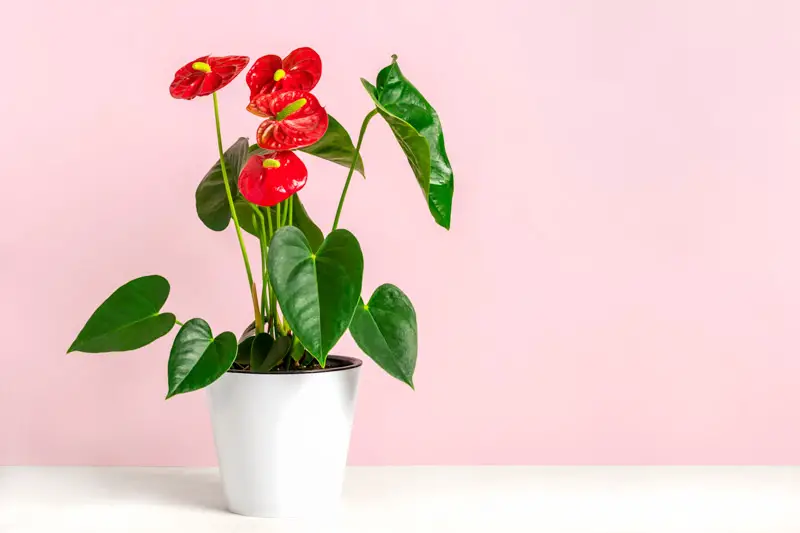
Often called the “Flamingo Flower”, the Anthurium is admired for its glossy, heart-shaped leaves and striking red, pink, or white spathes. These vibrant, waxy flowers can last for weeks, making Anthuriums a perfect choice for those who want long-lasting indoor blooms.
With its bold color and tropical charm, this plant effortlessly enhances any home or office space.
Care Tips:
- Light: Thrives in medium to bright indirect light; too much direct sun can scorch the leaves.
- Watering: Keep the soil slightly moist but allow the top inch to dry out between waterings to prevent root rot.
- Humidity: Prefers high humidity (above 60%). Misting or using a humidity tray can help maintain optimal conditions.
- Temperature: Grows best in warm temperatures (65-80°F or 18-27°C); avoid cold drafts.
- Feeding: Use a balanced liquid fertilizer every 6-8 weeks during the growing season to encourage continuous blooms.
Why It’s Great:
The Anthurium is one of the most eye-catching indoor flowering plants, thanks to its bold and exotic appearance. Its flowers bloom for extended periods, bringing a refreshing pop of color to your decor. Plus, it’s known to improve indoor air quality by filtering out toxins, making it both a beautiful and beneficial addition to your space.
6. Begonia (Begonia spp.)
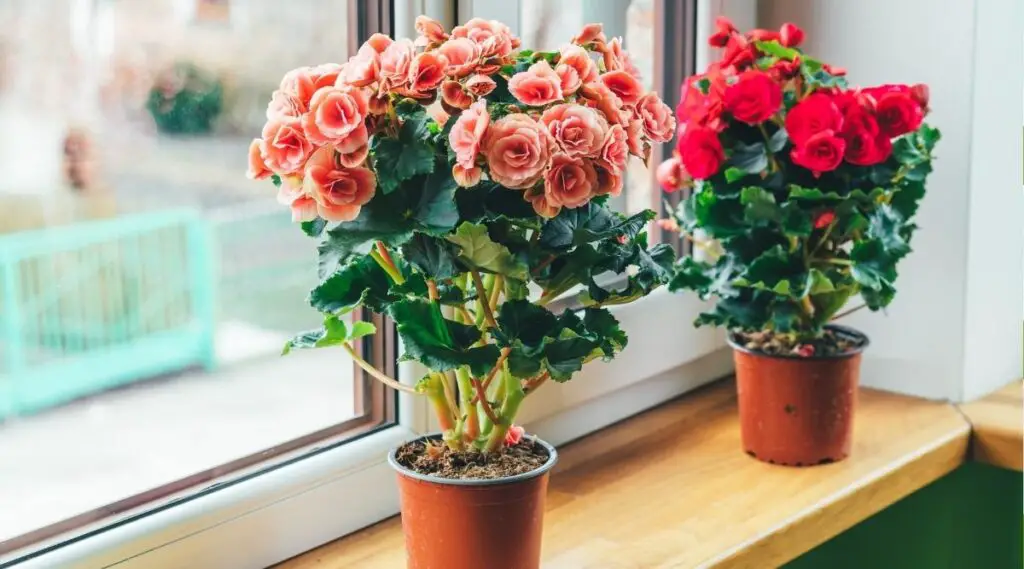
While Begonias are often grown outdoors, many varieties adapt well to indoor environments, offering a perfect balance of striking foliage and colorful blooms. These plants are available in a variety of types, including Rex Begonias, Angel Wing Begonias, and Wax Begonias, each with its unique leaf patterns and vibrant flowers.
With proper care, Begonias can bloom indoors for months, making them a versatile and rewarding choice for plant lovers.
Care Tips:
- Light: Prefers bright, indirect sunlight; too much direct sun can scorch the leaves.
- Watering: Water when the top inch of soil feels dry. Avoid overwatering, as Begonias are prone to root rot.
- Humidity: Enjoys moderate to high humidity; using a humidity tray can help keep the air moist.
- Temperature: Thrives in warm temperatures (60-75°F or 16-24°C). Keep away from cold drafts and sudden temperature changes.
- Feeding: Use a balanced liquid fertilizer every 2-4 weeks during the growing season for continuous blooms.
Why It’s Great:
Begonias are among the most diverse indoor flowering plants, offering both lush foliage and beautiful blooms in shades of red, orange, pink, and white. Their adaptability and long-lasting flowers make them an excellent choice for brightening up windowsills, shelves, and tabletops.
Whether you prefer their decorative leaves or their delicate blossoms, Begonias are a standout addition to any indoor garden.
7. Jasmine (Jasminum sambac)
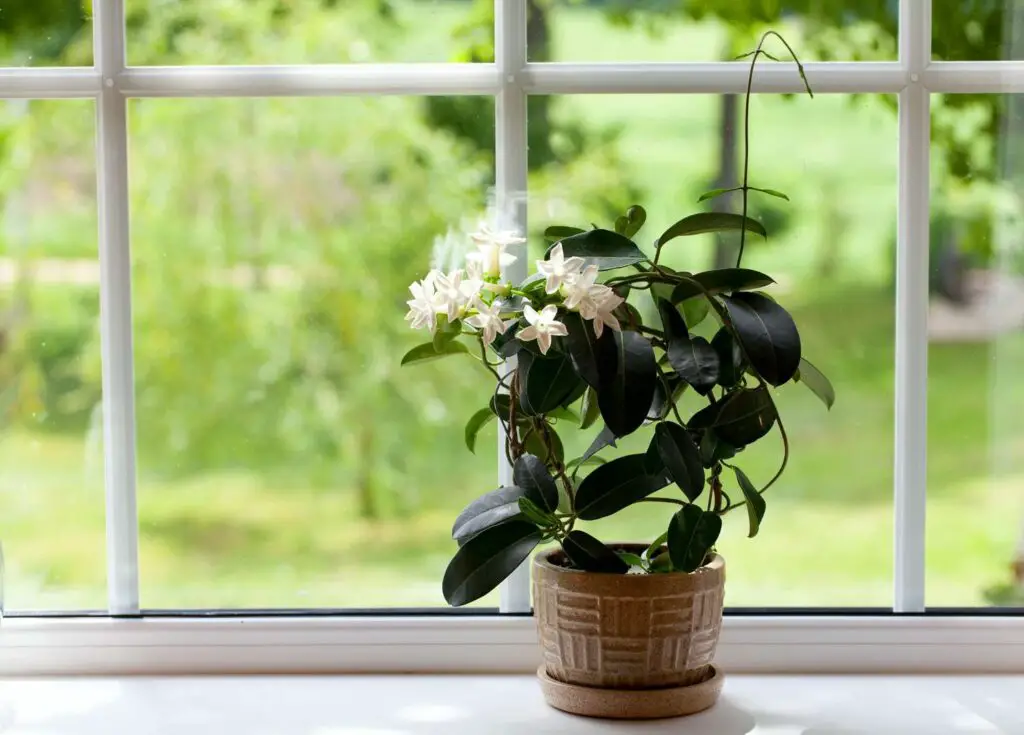
Jasmine is cherished for its sweet, intoxicating fragrance and delicate white flowers, making it a sensory delight in any indoor space. The Arabian Jasmine (Jasminum sambac) is one of the best varieties for indoor cultivation, producing star-shaped blossoms that can bloom year-round under the right conditions.
Beyond its beauty, Jasmine is often used in aromatherapy for its calming and stress-relieving properties.
Care Tips:
- Light: Requires bright, indirect light with a few hours of direct sunlight daily for optimal flowering. A sunny windowsill is ideal.
- Watering: Keep the soil consistently moist but not soggy. Allow the top inch of soil to dry slightly before watering again.
- Humidity: Prefers moderate to high humidity. Misting the plant occasionally or using a humidity tray can help.
- Temperature: Grows best in warm temperatures (60-75°F or 16-24°C). Protect from cold drafts and sudden temperature changes.
- Feeding: Use a balanced fertilizer every 4-6 weeks during the growing season to promote continuous blooms.
Why It’s Great:
Jasmine is one of the most fragrant indoor flowering plants, capable of filling an entire room with its delightful scent. This makes it a perfect choice for bedrooms, living spaces, or anywhere you want a refreshing and relaxing atmosphere.
Plus, its elegant white blooms contrast beautifully against glossy green foliage, adding a touch of charm and serenity to your home.
8. Kalanchoe (Kalanchoe blossfeldiana)
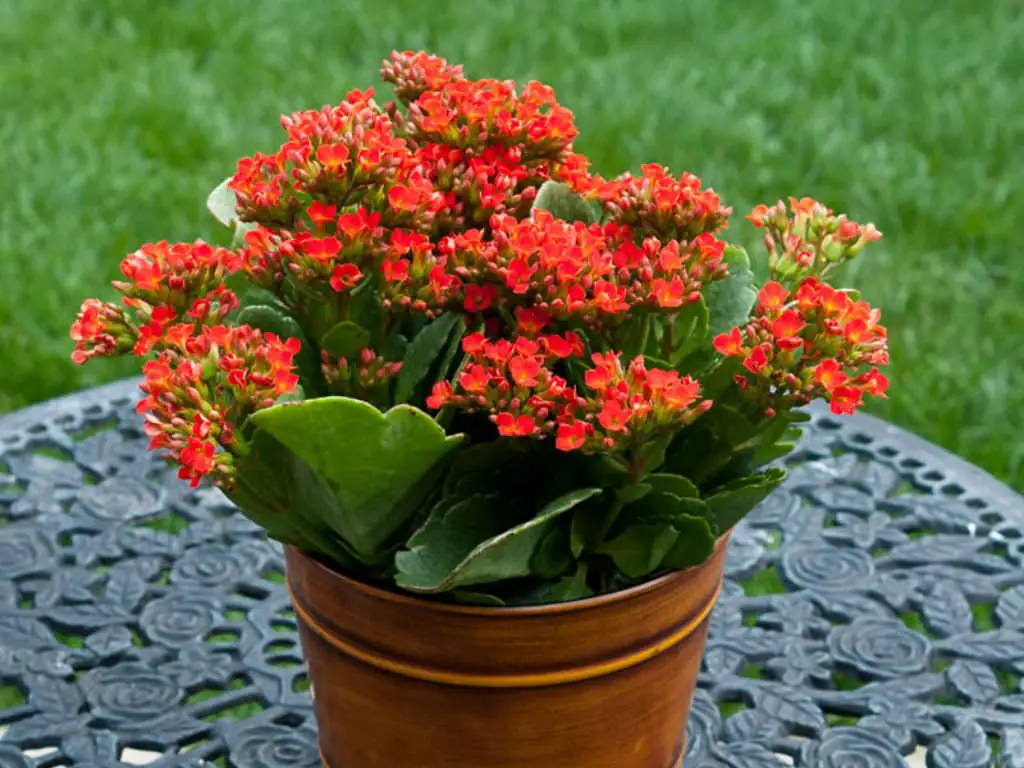
Kalanchoe is a hardy, low-maintenance succulent that produces clusters of small, vibrant flowers in shades of red, pink, orange, yellow, and white. Its thick, fleshy leaves store water, making it an excellent choice for those who prefer plants that require minimal upkeep.
With its long-lasting blooms and resilience, Kalanchoe adds a cheerful burst of color to any indoor space.
Care Tips:
- Light: Loves bright, indirect light and can tolerate some direct sunlight, which encourages more blooms.
- Watering: Water sparingly, allowing the soil to dry out completely between waterings to prevent root rot.
- Humidity: Prefers low to moderate humidity, making it well-suited for typical indoor conditions.
- Temperature: Thrives in warm temperatures (60-80°F or 16-27°C). Keep away from cold drafts.
- Feeding: Use a diluted liquid fertilizer once a month during the growing season for continuous flowering.
Why It’s Great:
As one of the most resilient indoor flowering plants, Kalanchoe is perfect for beginners and busy plant lovers. It requires little attention yet rewards you with weeks of bright, cheerful flowers. Its compact size makes it a great fit for windowsills, shelves, or desks, bringing life and color to any room with ease.
9. Cactus (Schlumbergera)
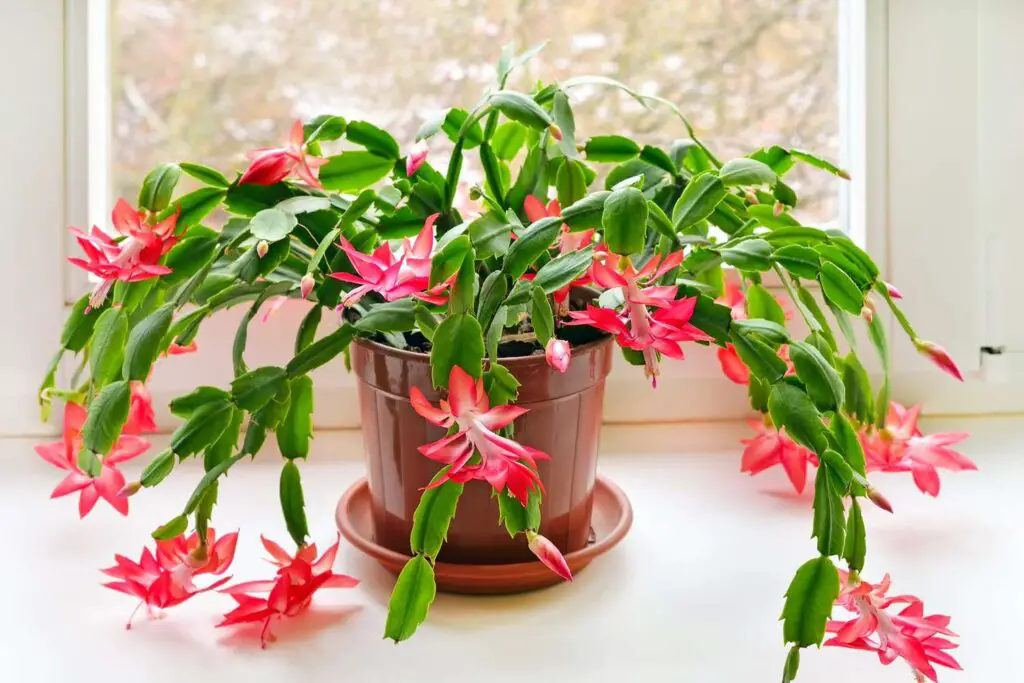
Unlike typical desert cacti, the Cactus (Schlumbergera) is a tropical variety that produces vibrant, tubular flowers in shades of red, pink, white, or orange. While it is best known for blooming during the winter holidays, with proper care, it can rebloom multiple times a year.
Its cascading, segmented stems give it a unique appearance, making it a standout among indoor flowering plants.
Care Tips:
- Light: Thrives in bright, indirect light. Too much direct sun can scorch the leaves.
- Watering: Water when the top inch of soil is dry, but avoid overwatering, as it is prone to root rot.
- Humidity: Prefers moderate to high humidity. Occasional misting can help during dry seasons.
- Temperature: Grows best in temperatures between 60-70°F (16-21°C). Sudden temperature drops can hinder blooming.
- Feeding: Use a balanced liquid fertilizer every 4-6 weeks during the growing season and a bloom-boosting fertilizer in the fall to encourage flowering.
Why It’s Great:
The Cactus is a festive favorite, often gifted during the holiday season due to its timely blooms and easy care. With the right conditions, it can live and bloom for decades, making it a long-lasting, meaningful addition to any plant collection. Its beautiful, trailing growth habit also makes it perfect for hanging baskets or elevated pots.
10. Lavender (Lavandula)
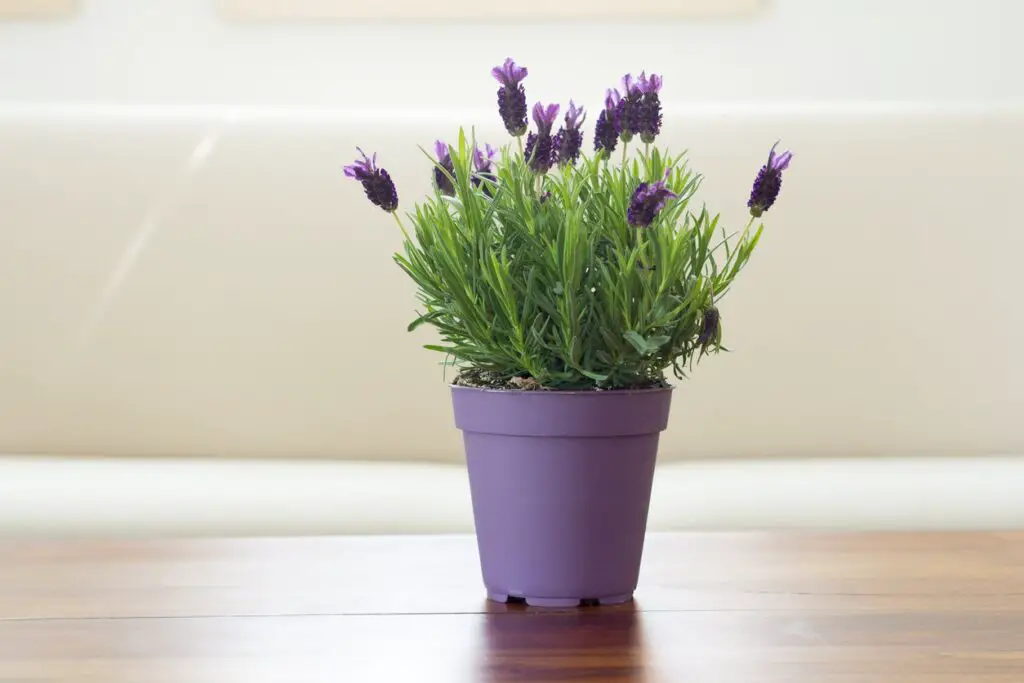
Although commonly grown outdoors, certain compact varieties of Lavender, such as French Lavender (Lavandula dentata) and English Lavender (Lavandula angustifolia), can thrive indoors when given the right conditions.
Known for its soothing fragrance and delicate purple blooms, Lavender not only enhances your space visually but also promotes relaxation and better sleep. Its natural aroma makes it a favorite choice for bedrooms and meditation spaces.
Care Tips:
- Light: Requires bright, direct light for at least 6 hours a day. A sunny south-facing window is ideal.
- Watering: Water when the soil is almost dry, but avoid overwatering to prevent root rot. Lavender prefers well-draining soil.
- Humidity: Prefers low to moderate humidity. Ensure good airflow around the plant to prevent mold or mildew.
- Temperature: Grows best in warm temperatures (65-75°F or 18-24°C) and does not tolerate extreme cold.
- Feeding: Use a diluted, balanced fertilizer once a month during the growing season for healthy growth and blooms.
Why It’s Great:
As one of the most fragrant indoor flowering plants, Lavender is perfect for creating a calming atmosphere in your home. Its fresh, herbal scent is known to reduce stress, improve sleep quality, and even repel insects. Placing a pot in your bedroom or near your relaxation space ensures a peaceful environment with a natural touch of beauty.
Pros and Cons of Growing Indoor Flowering Plants
Pros:
- Enhances Home Aesthetics – Indoor flowering plants add vibrant colors and visual appeal to any space.
- Air Purification – Many plants, such as Peace Lilies and Anthuriums, help remove toxins from the air, improving indoor air quality.
- Mood-Boosting Effects – Studies show that being around plants reduces stress, promotes relaxation, and boosts productivity.
- Fragrance & Aromatherapy – Plants like Jasmine and Lavender provide a natural, soothing scent that enhances relaxation and sleep quality.
- Encourages Mindfulness & Routine – Caring for plants helps develop a sense of responsibility and mindfulness while adding a calming daily routine.
- Variety & Versatility – There are plenty of options to suit different spaces, lighting conditions, and personal preferences.
Cons:
- Requires Regular Care – Some flowering plants need specific watering, humidity, and fertilization schedules to bloom properly.
- Pest & Disease Risks – Indoor plants can attract pests like aphids, spider mites, or fungus gnats if not maintained properly.
- Some Have Specific Light Needs – Plants like Hibiscus and Lavender require bright sunlight, which can be challenging in low-light homes.
- Seasonal or Short-Lived Blooms – Some plants, such as Orchids or Christmas Cactus, bloom only during certain times of the year.
- Potential for Allergies – Some flowering plants release pollen or scents that may trigger allergies in sensitive individuals.
- Toxicity to Pets & Children – Certain plants (e.g., Peace Lily, Anthurium) can be toxic if ingested by pets or small children.
Indoor flowering plants are a fantastic way to bring natural beauty, fragrance, and a refreshing atmosphere into your home. Whether you prefer the bold blooms of Hibiscus, the delicate charm of African Violets, or the soothing scent of Lavender, there is a perfect plant for every space and skill level.
While some varieties require specific care, the benefits—such as air purification, stress relief, and home decor enhancement—make them well worth the effort. By choosing the right plants and providing proper care, you can enjoy vibrant, long-lasting blooms that brighten your indoor space year-round.
Start your indoor gardening journey today and experience the joy of nurturing indoor flowering plants!
1. Which indoor flowering plants are the easiest to care for?
Some of the easiest indoor flowering plants for beginners include Peace Lily, Kalanchoe, and African Violets. These plants require minimal maintenance, adapt well to indoor conditions, and bloom with basic care.
2. How can I make my indoor flowering plants bloom more often?
To encourage frequent blooming, ensure your plant gets adequate light, proper watering, and regular feeding with a balanced or bloom-boosting fertilizer. Many plants, such as Orchids and Christmas Cactus, also benefit from a slight temperature drop at night to trigger flowering.
3. What are the best indoor flowering plants for low light?
If you have limited sunlight, opt for plants like Peace Lily, Anthurium, and certain Begonia varieties, which can thrive and bloom in low to medium indirect light. However, occasional exposure to brighter light will improve their flowering potential.

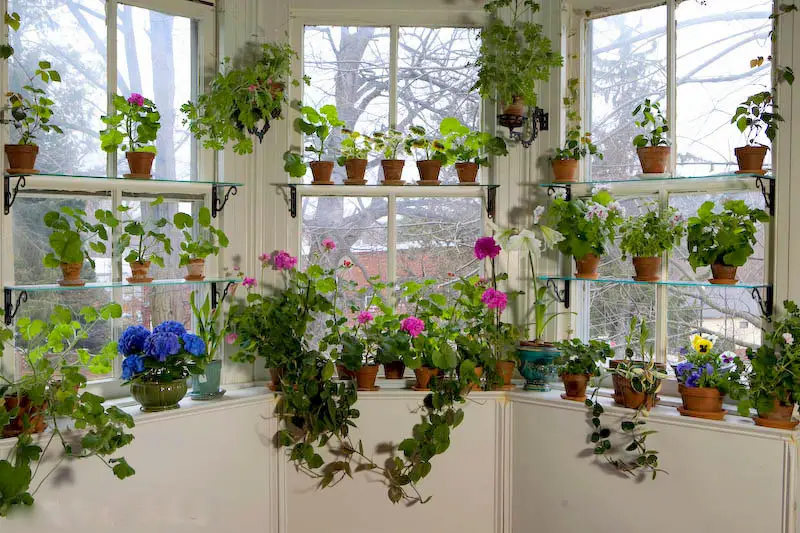
2 thoughts on “10 Indoor Flowering Plants: That Bloom Beautifully!”